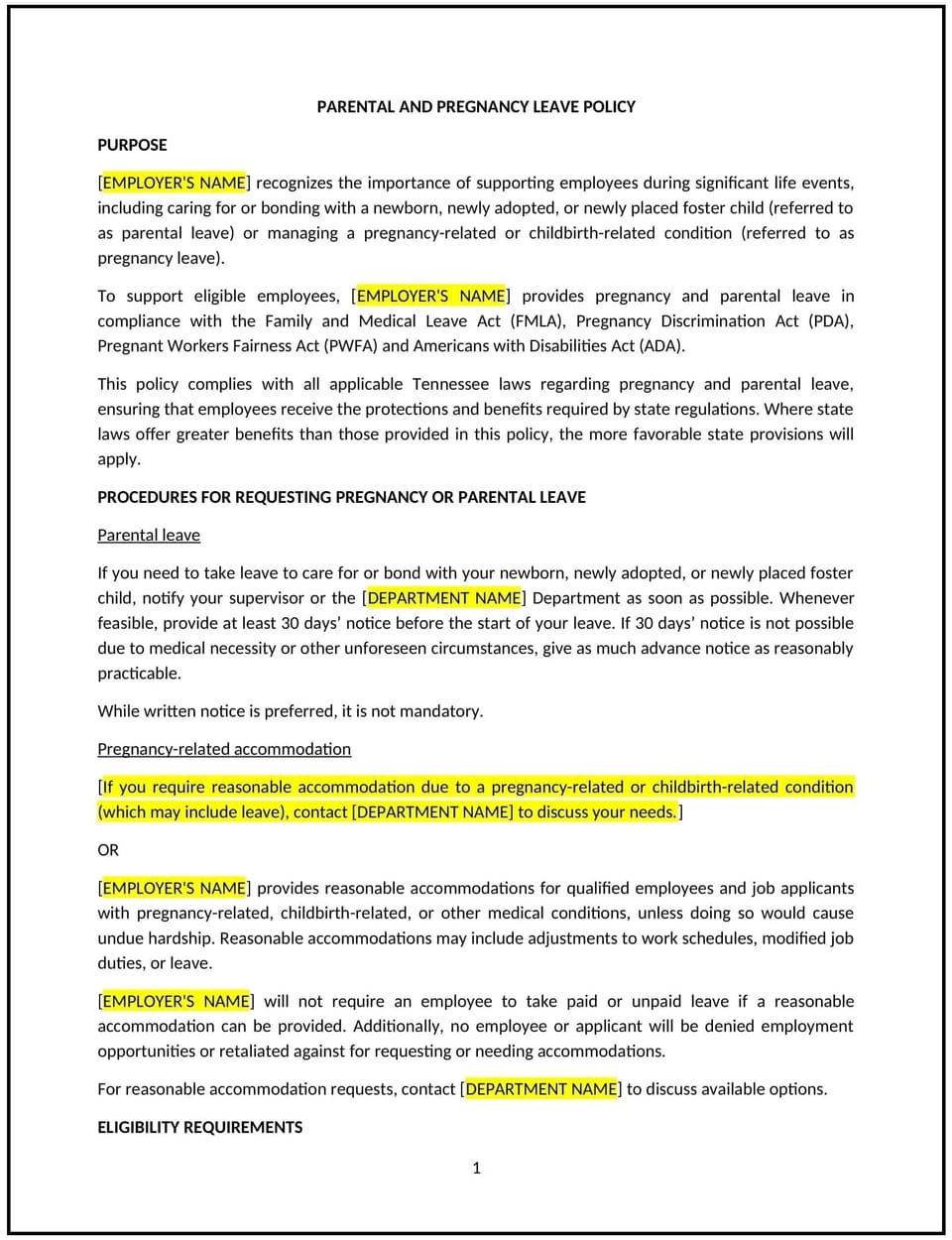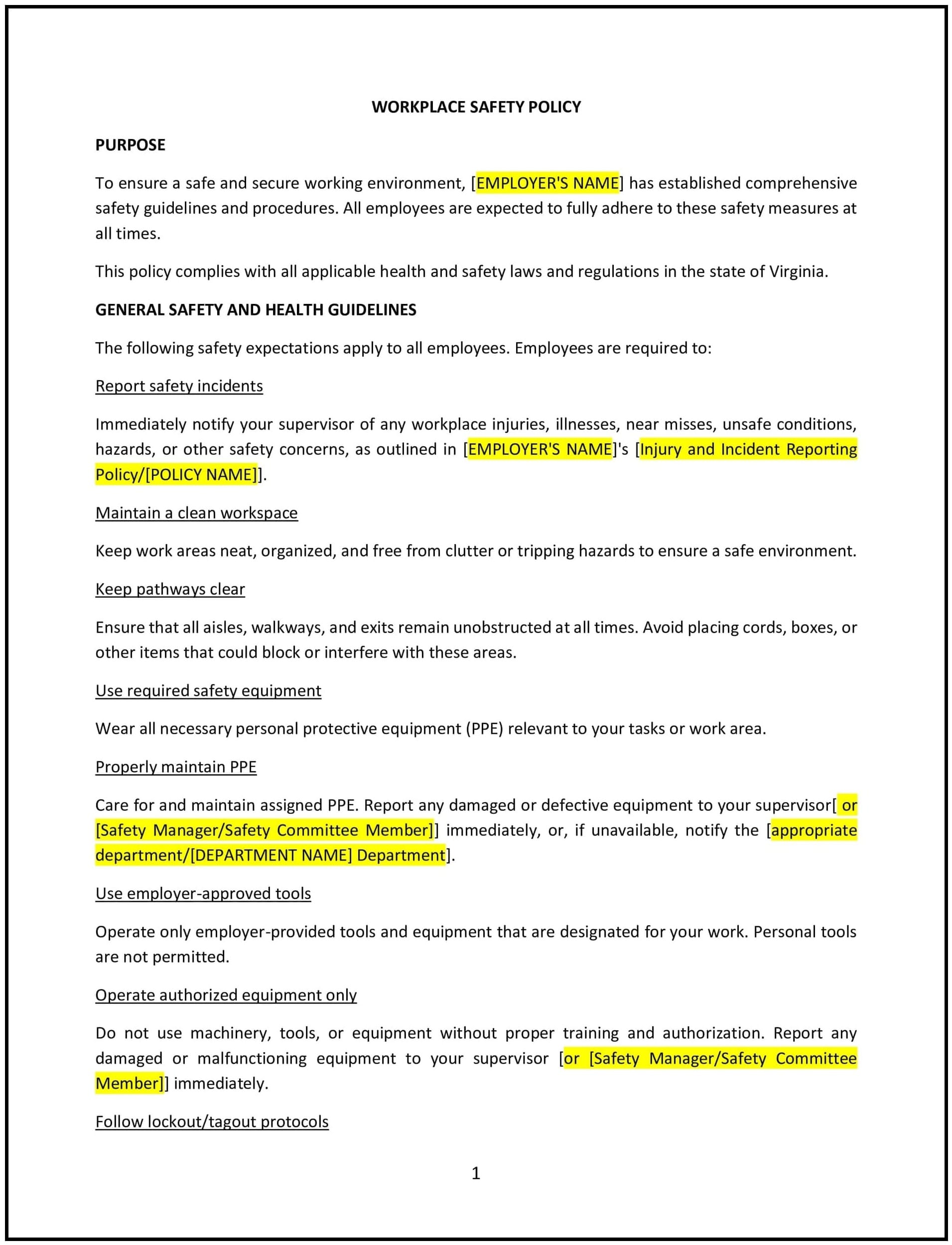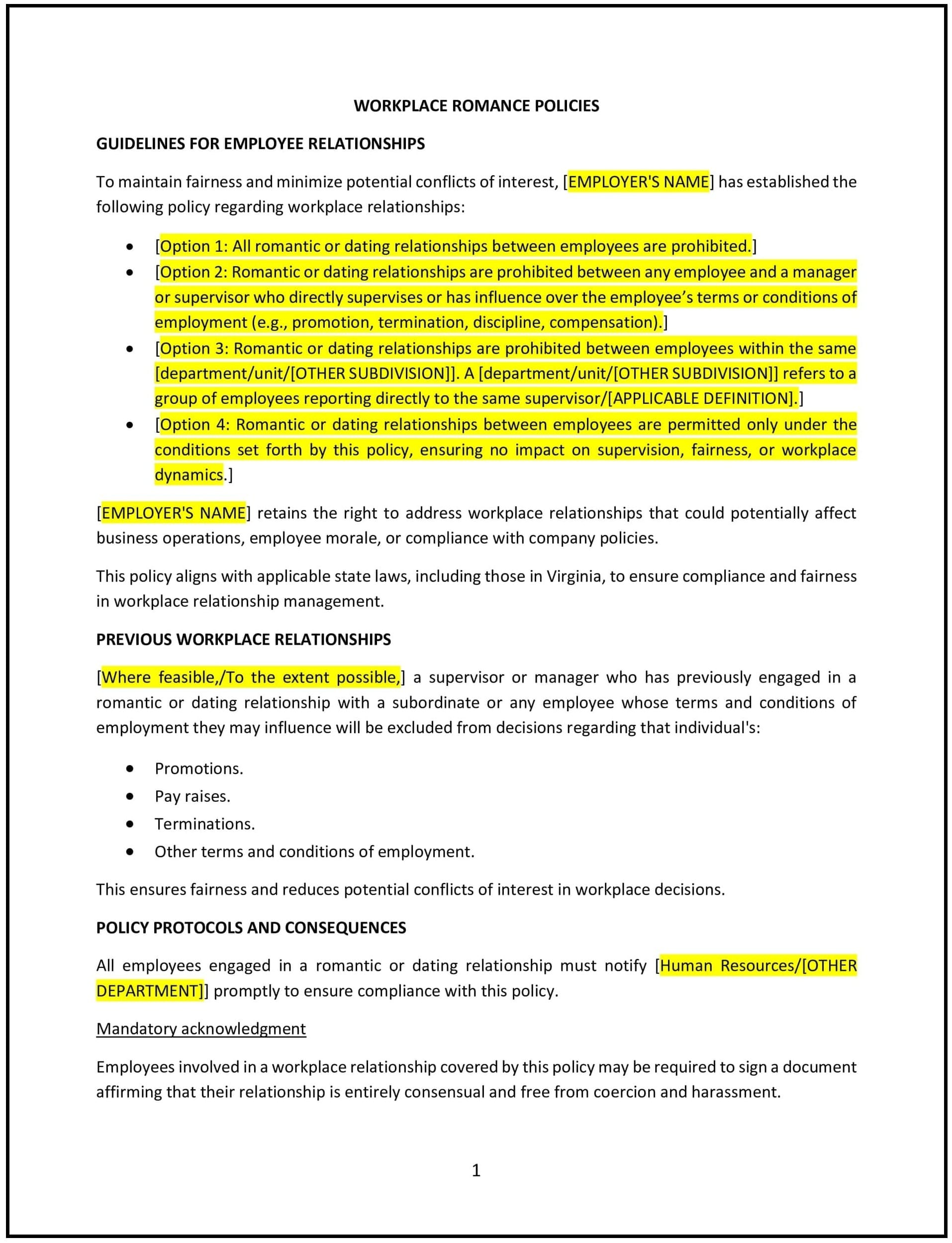Parental and pregnancy leave policy (Tennessee): Free template

Parental and pregnancy leave policy (Tennessee)
This parental and pregnancy leave policy is designed to help Tennessee businesses establish guidelines for employees taking leave for childbirth, adoption, or pregnancy-related medical needs. It outlines procedures for requesting leave, job protection, and maintaining benefits during leave.
By adopting this policy, businesses can support employees during significant life events, comply with federal and state laws, and foster a compassionate workplace culture.
How to use this parental and pregnancy leave policy (Tennessee)
- Define eligible leave: Specify the types of leave covered, such as maternity, paternity, or adoption leave.
- Set leave duration: Outline the maximum amount of leave provided, such as 12 weeks under the Family and Medical Leave Act (FMLA).
- Establish request procedures: Provide steps for employees to request leave, including required documentation and notice.
- Ensure job protection: Guarantee that employees will return to the same or an equivalent position after leave.
- Address benefits: Explain how benefits, such as health insurance, will be maintained during leave.
- Train managers: Educate supervisors on handling leave requests and maintaining workflow.
- Review and update: Assess the policy annually to ensure it aligns with evolving business needs and legal requirements.
Benefits of using this parental and pregnancy leave policy (Tennessee)
This policy offers several advantages for Tennessee businesses:
- Supports employees: Demonstrates a commitment to helping employees balance work and family responsibilities.
- Enhances retention: Reduces turnover by providing job security during significant life events.
- Promotes a positive culture: Fosters a workplace environment of compassion and support.
- Ensures compliance: Helps businesses comply with federal and state leave laws.
- Builds trust: Shows employees that the business values their personal and family needs.
Tips for using this parental and pregnancy leave policy (Tennessee)
- Communicate the policy: Share the policy with employees and include it in the employee handbook.
- Provide training: Educate managers on handling leave requests and maintaining workflow.
- Monitor compliance: Regularly review leave requests to ensure adherence to the policy.
- Address issues promptly: Take corrective action if leave requests are mishandled or denied improperly.
- Update regularly: Assess the policy annually to ensure it aligns with evolving business needs.
Q: How does this policy benefit businesses?
A: It supports employees, enhances retention, and fosters a compassionate workplace culture.
Q: What types of leave are covered under this policy?
A: Maternity, paternity, adoption, and pregnancy-related medical leave.
Q: Is parental leave paid or unpaid?
A: Under the FMLA, leave is generally unpaid, but businesses may offer paid leave as part of their benefits package.
Q: How can businesses minimize disruptions during employee absences?
A: By cross-training employees, adjusting workloads, or using temporary staff.
Q: How often should businesses review this policy?
A: Businesses should review the policy annually or as needed to address changing legal and business needs.
This article contains general legal information and does not contain legal advice. Cobrief is not a law firm or a substitute for an attorney or law firm. The law is complex and changes often. For legal advice, please ask a lawyer.


